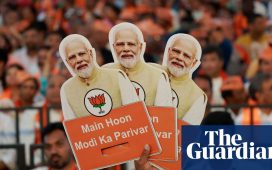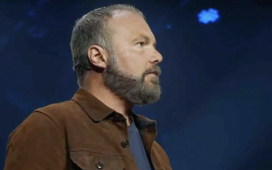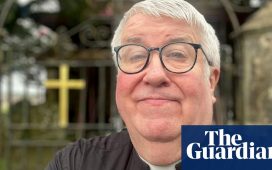Many would consider it a niche hobby; others might reach for the word “obsessive”. There are some, Cameron Newham admits, who may consider him an “eccentric weirdo”.
So how would he describe the remarkable ambition that he set for himself, more than two decades ago, to photograph, in detail, every parish church in England?
“I think everybody has a certain eccentricity – and this does require that,” he says with a smile. “I do have a particular mission for this. But even so I am not all-consumed by it.”
Now, after 9,000 churches and more than half a million photos, the Australian is entering the final phase of the project, with a mere 1,500 more churches still to photograph, which he hopes to complete within three years. The ambition is to make the images available through an app, which he has developed himself, as part of what he calls his “gift to the future”.
Church attendance may be continuing to fall in the UK, but for more than a millennium, in towns, villages and hamlets across Britain, parish churches have been the focus of community life. Some are richly adorned architectural wonders, some simple buildings that have been patched up repeatedly over centuries. Newham’s app, when he completes it, will provide the most comprehensive photographic archive ever compiled of a collection of buildings that are considered the nation’s greatest treasures.

It is almost 23 years since Newham embarked on his project, in the spring of 1997, having moved to Britain from Perth the previous year. An IT professional with an interest in historic buildings, he had been collecting some of the famous mid-20th century guides to historic English buildings written by Nicolaus Pevsner, but was disappointed that the number of photographs in each was limited.
“You are left wondering what some of these buildings look like. So I bought a little digital camera and I thought I would go out at the weekend and take three pictures of each.”
The initial plan was just for a few snapshots, but as memory card capacity rapidly increased, he thought he would include all exteriors, then all internal monuments prior to 1900, and so on. He doesn’t photograph everything – bells, organs and church chests don’t interest him – but as his Instagram feed shows, that allows for a dizzying array of fonts, tombs, monuments, wall paintings and stained glass.
Largely self-taught, he has developed a technique using photogrammetry – stitching together multiple snaps – to build up striking images of tomb monuments that make them easier to visualise than in the flesh. Several academics have already commissioned him to focus on particular details that illuminate areas of their research, including into medieval armoury or particular sculptors.
Unmarried and now in his mid 50s, Newham has sacrificed weekends and holidays trekking around churches – at one point taking 18 months off work “to do Cornwall and Devon – all 847 of them”. On a good day, at the height of summer and if the keyholders are obliging, he can fit in 12 churches in a day, taking somewhere around 50 pictures in each.
As a rule, Newham doesn’t formally ask permission before visiting – “nobody actually knows who actually owns these churches” –but finds most church wardens or vicars are curious and grateful. (A second app, already up and running, contains details on keyholders and whether churches are open or locked.)
The obvious question, however, is why a man who describes himself as “not English, not an architectural historian and not a photographer” – and also not religious – would do this.
“I thought, this is … a grand way of projecting myself into the future after I’m long gone. People will look at these photographs maybe in 100 years, maybe in 500 years, and it’s my connection to the future.”





